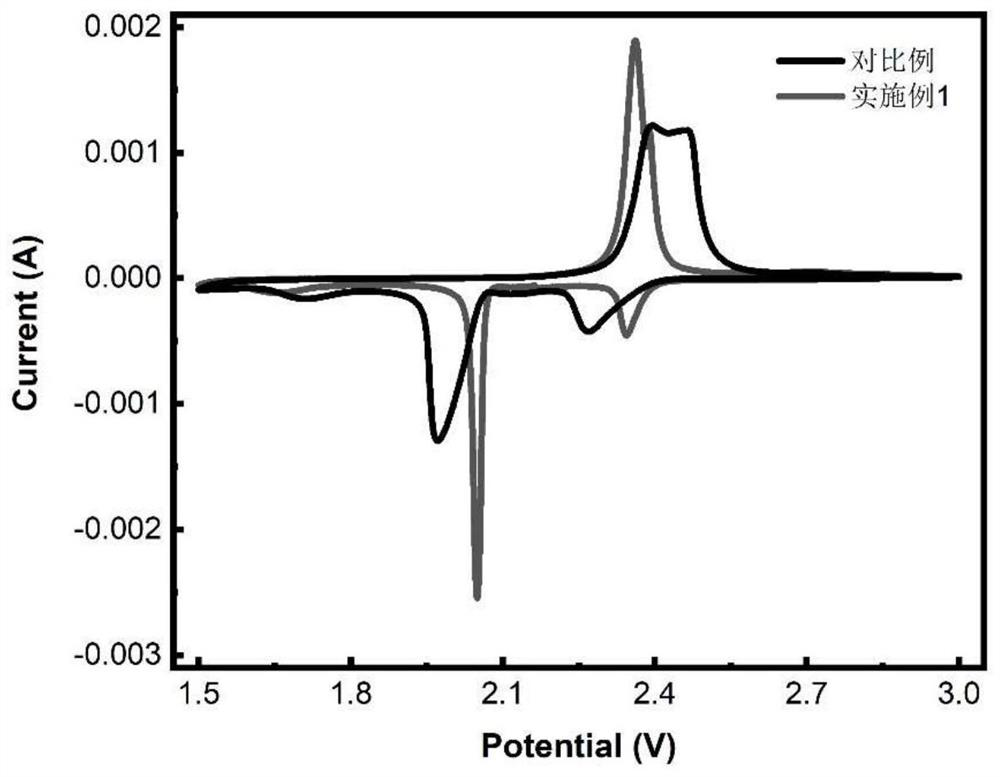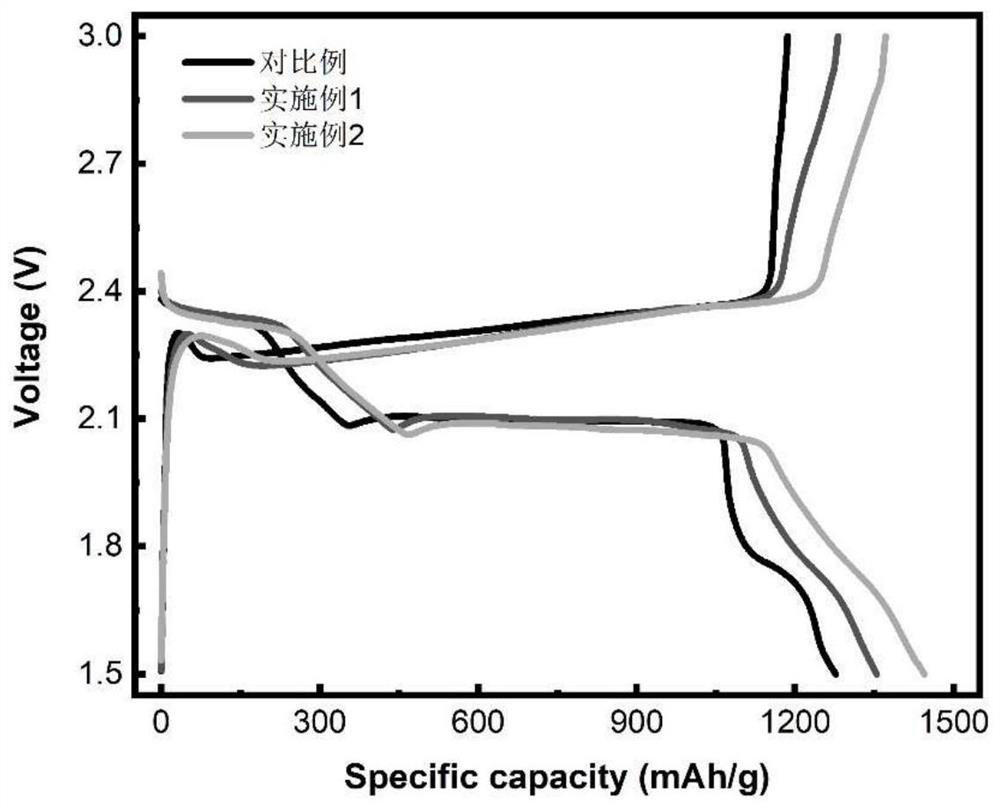Binary transition metal sulfide material and application thereof
A transition metal, sulfide technology, applied in chromium compounds, inorganic chemistry, electrical components, etc., can solve the problems of irreversible loss of active materials sulfur and lithium, limited effect, low conductivity of lithium sulfide, etc., to promote electrochemical reactions. , Improve the discharge specific capacity and reduce the effect of the impact
- Summary
- Abstract
- Description
- Claims
- Application Information
AI Technical Summary
Problems solved by technology
Method used
Image
Examples
Embodiment 1
[0077] This embodiment provides a novel binary transition metal sulfide material V 0.1 Cr 0.9 S 2 The preparation process, containing V 0.1 Cr 0.9 S 2 The preparation process of the sulfur electrode and the lithium-sulfur battery using the electrode, the preparation process comprises the following steps:
[0078] 1. According to the following equation, with 1g of product V 0.1 Cr 0.9 S 2 Calculate the mass of the reactant for the target.
[0079] Na 2 S+0.2V+1.8Cr+3S→2NaV 0.1 Cr 0.9 S 2
[0080] Put the reactant into an agate ball mill jar, and mill it on a ball mill (ball-to-material ratio: 2:1) for 1 hour to mix the reactant evenly. Then the ball-milled sample was pressed into a sheet and transferred to a corundum boat. In an argon-protected tube furnace, the temperature was raised to 200°C at 5°C / min, kept for 6h, and then the temperature was raised to 900°C at 5°C / min. , keep warm for 8h, after natural cooling, grind to get powdered NaV 0.1 Cr 0.9 S 2 . I...
Embodiment 2
[0091] This embodiment provides a novel binary transition metal sulfide material V 0.3 Cr 0.7 S 2 The preparation process, containing V 0.3 Cr 0.7 S 2 The preparation process of the sulfur electrode and the lithium-sulfur battery using the electrode, the preparation process comprises the following steps:
[0092] 1. According to the following equation, with 1g of product V 0.3 Cr 0.7 S 2 Calculate the mass of the reactant for the target.
[0093] Na 2 S+0.6V+1.4Cr+3S→2NaV 0.3 Cr 0.7 S 2
[0094] Put the reactant into an agate ball mill jar, and mill it on a ball mill (ball-to-material ratio: 2:1) for 1 hour to mix the reactant evenly. Then the ball-milled sample was pressed into a sheet and transferred to a corundum boat. In an argon-protected tube furnace, the temperature was raised to 200°C at 5°C / min, kept for 6h, and then the temperature was raised to 900°C at 5°C / min. , keep warm for 8h, after natural cooling, grind to get powdered NaV 0.3 Cr 0.7 S 2 . I...
Embodiment 3
[0105] This embodiment provides a novel binary transition metal sulfide material V 0.7 Cr 0.3 S 2 The preparation process, containing V 0.7 Cr 0.3 S 2 The preparation process of the sulfur electrode and the lithium-sulfur battery using the electrode, the preparation process comprises the following steps:
[0106] 1. According to the following equation, with 1g of product V 0.7 Cr 0.3 S 2 Calculate the mass of the reactant for the target.
[0107] Na 2 S+1.4V+0.6Cr+3S→2NaV 0.7 Cr 0.3 S 2
[0108] Put the reactant into an agate ball mill jar, and mill it on a ball mill (ball-to-material ratio: 2:1) for 1 hour to mix the reactant evenly. Then the ball-milled sample was pressed into a sheet and transferred to a corundum boat. In an argon-protected tube furnace, the temperature was raised to 200°C at 5°C / min, kept for 6h, and then the temperature was raised to 900°C at 5°C / min. , keep warm for 8h, after natural cooling, grind to get powdery NaV 0.7 Cr 0.3 S 2 .
...
PUM
 Login to View More
Login to View More Abstract
Description
Claims
Application Information
 Login to View More
Login to View More - R&D
- Intellectual Property
- Life Sciences
- Materials
- Tech Scout
- Unparalleled Data Quality
- Higher Quality Content
- 60% Fewer Hallucinations
Browse by: Latest US Patents, China's latest patents, Technical Efficacy Thesaurus, Application Domain, Technology Topic, Popular Technical Reports.
© 2025 PatSnap. All rights reserved.Legal|Privacy policy|Modern Slavery Act Transparency Statement|Sitemap|About US| Contact US: help@patsnap.com



